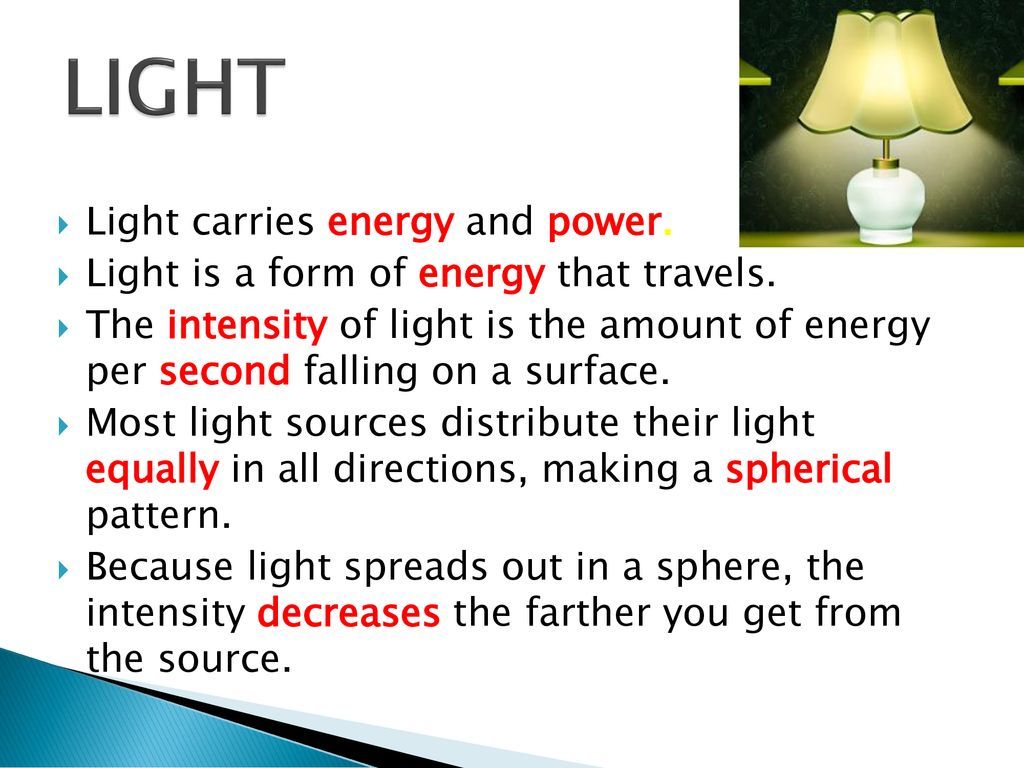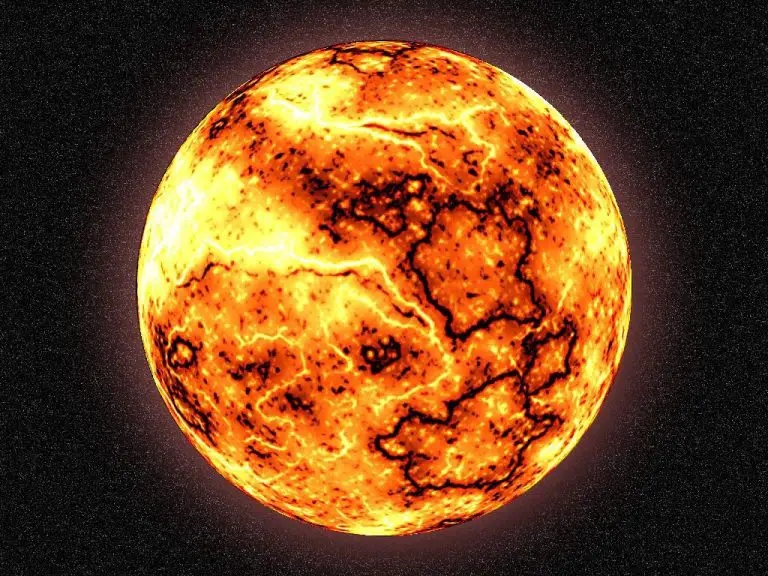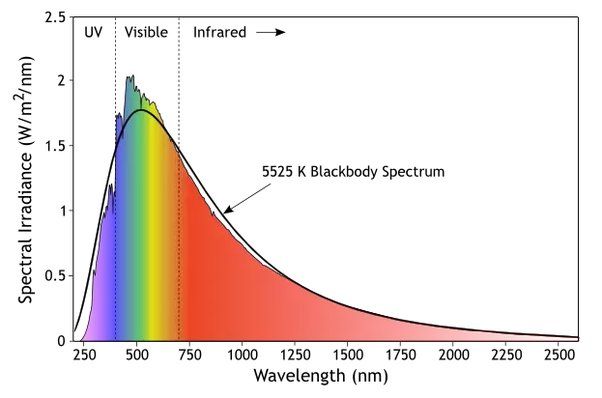What Carries Light Energy?

Light energy is a form of electromagnetic radiation that can be detected by the human eye (1). It is a type of kinetic energy that consists of photons, or particles of energy that travel in waves. Light energy enables humans and other organisms to see the world around them. It makes vision possible by allowing light photons to enter the eye and trigger neural impulses to the brain via the optic nerve. Without light energy, the world would appear dark and life as we know it would not exist.
Light energy is essential for photosynthesis in plants, providing the energy that enables plants to create sugars from carbon dioxide and water (2). It drives the process of primary production that forms the foundation of the food chain on Earth. Light energy from the Sun also provides the warmth that maintains liquid water and enables life to thrive on Earth’s surface. Overall, light energy underpins life and makes existence possible.
(1) https://www.fire2fusion.com/light-energy/definition-of-light-energy.html
(2) https://www.fire2fusion.com/light-energy/
Photons
Photons are quantum particles of energy that go through electromagnetic radiation and make up light. Photons carry electromagnetic force as both particles and waves, enabling light energy transfer (Source). Although massless, they have momentum and travel at the speed of light. Their energy is directly proportional to their frequency. When electrons in atoms get excited by absorbing photons, they jump to higher energy levels. As electrons return to lower levels, they emit photons. This emission of photons is what gives off light (Source).
Photons are the most basic units, or quanta, of light. Their behavior demonstrates the particle-wave duality of light. They exhibit properties of both particles and waves at the same time. As particles, photons have no mass but still carry momentum and discrete amounts of energy. As waves, they show interference and diffraction phenomena. Photons mediate electromagnetic interactions between charged particles (Source). Overall, photons are the force carriers of the electromagnetic field and the basic units of light energy.
Reflection
Reflection occurs when light bounces off a surface. When light hits a surface, some of the photons are absorbed while others are reflected. The reflected photons change direction and continue traveling until they hit another surface. How much light is reflected vs. absorbed depends on the material. Smooth, shiny surfaces like mirrors reflect almost all the light that hits them. This allows mirrors to effectively carry and redirect light.
Other surfaces like water, metal, and painted walls reflect some percentage of light. The reflected photons scatter in many directions rather than traveling in a single coherent beam like with a mirror. The amount of reflection depends on factors like the angle of incidence and the refractive index of the material. Rougher surfaces reflect light more diffusely. Reflection allows many surfaces to carry light energy, but mirrors specifically are engineered to optimize reflection and light transport.
On the atomic level, reflection occurs when photons interact with the electrons orbiting atoms in the material. The electrons absorb photon energy and then re-emit photons with a changed direction. The electron essentially gets disturbed by the incoming photon and re-radiates the energy outward. The surface smoothness and atomic structure of the material determines how orderly this re-emission process is, resulting in either diffuse or specular reflection.
Overall, reflection allows various surfaces like mirrors, water, and walls to carry light energy through the redirection of photons. Mirrors in particular are designed to optimize specular reflection and provide the clearest transport of light.
Refraction
Refraction refers to the bending of light waves when they pass from one transparent medium to another, such as from air to glass or water. This occurs because light travels at different speeds through different transparent materials. For example, light moves slower through water than air. When a light ray crosses between two media, one side of the ray speeds up while the other side slows down. This causes the light to bend and change direction.
The amount of bending depends on the refractive indexes of the two media. The larger the difference between the refractive indexes, the more the light will bend. When light passes from a medium with a lower refractive index to a higher one, such as air to glass, it bends towards the normal line. This is called positive refraction. When light passes from a higher to lower refractive index, like glass to air, it bends away from the normal line. This is negative refraction.
Refraction allows light to travel through transparent objects and substances. As light rays pass through, they bend at each interface between media. This enables the light beams to follow the shape of the object and transmit through it. Refraction is what allows glass lenses to focus light and optical fibers to carry light signals over long distances.
Lenses
Lenses are optical devices that use refraction to manipulate light rays and focus them. Refraction occurs when light travels from one medium to another and bends due to the change in speed. Lenses utilize refraction by incorporating curved glass or plastic surfaces. As light passes through a lens, the curvature causes the rays to refract and converge or diverge.
Converging lenses, like biconvex lenses, are thicker in the middle than at the edges. As light rays enter the lens parallel to the optical axis, they are bent towards each other and converge at a focal point on the other side. This allows converging lenses to focus diffuse light from an object into a sharp image. The convex shape provides the refraction needed to concentrate the light.
Diverging lenses, like biconcave lenses, are thinner in the middle than at the edges. As light enters this type of lens, the rays bend away from each other and spread out. Diverging lenses do not produce a focused image, but they can expand and disperse concentrated light.
Overall, the curve and thickness of a lens determines how much the path of light bends from refraction. This enables lenses to control light by gathering divergent rays or spreading out focused beams. Refraction gives lenses their ability to focus images for cameras, magnify objects in microscopes and telescopes, and much more.1
Optical Fibers
Optical fibers are thin strands of glass or plastic that can carry light over long distances using a phenomenon called total internal reflection. When light traveling through an optical fiber hits the boundary between the fiber core and cladding at an angle, it gets reflected back into the core instead of escaping the fiber. This occurs because the fiber core has a higher refractive index than the cladding, so the light gets trapped inside the core and continues propagating down the length of the fiber.
Total internal reflection allows optical fibers to act like “pipes” for light, guiding it along the path of the fiber with very little loss of signal. Even when the fiber twists and turns, the light continues bouncing off the core/cladding boundary. Optical fibers can carry data signals encoded onto light across continents with faster speeds and greater bandwidth than electrical cables.[1]
The development of low-loss optical fibers in the 1970s enabled the rise of modern fiber optic telecommunications networks. Today, fiber optics are used for telephone, cable TV, and internet networks. They are also used in medical imaging tools like endoscopes and for transmitting power from lasers in industrial and scientific applications.[2]
Optical fibers rely on total internal reflection, a key principle of optics, to transmit light efficiently through long, thin strands of glass or plastic fiber with very little absorption of the signal.
[1] https://www.nai-group.com/optical-fiber-technology-how-it-works/
[2] https://www.heraeus.com/en/hcv/knowledge_base/making_optical_fibers_2/making_optical_fibers_1.html
The Atmosphere
Light travels through the atmosphere in a couple of different ways. As sunlight enters earth’s atmosphere from space, some of the light is absorbed by gases like ozone, water vapor, carbon dioxide and methane. Other wavelengths of light are scattered by molecules and particles in the air, causing the blue color of the sky. This scattering effect is called Rayleigh scattering. Some sunlight also continues through the atmosphere without being scattered or absorbed. The greenhouse effect occurs when certain gases like carbon dioxide, methane and water vapor absorb infrared radiation emitted from the earth’s surface, causing the atmosphere to warm up. Without the greenhouse effect, the earth’s average temperature would be around 0° Fahrenheit – too cold to support life. But human activities like burning fossil fuels have increased the amount of these greenhouse gases, enhancing the greenhouse effect and causing global warming. Light interacts with the atmosphere in complex ways that are crucial for life on earth.
Source: https://abcee.org/wp-content/uploads/2023/04/Science-Grade-8.pdf
Outer Space
Light is able to travel through outer space even though space is essentially empty. Outer space is filled with photons, which are particles that make up electromagnetic radiation, including visible light. Photons can move freely through the vacuum of space without interacting with any matter. This allows light to propagate through space at a constant speed for very long distances.
Although outer space is mostly empty, light encounters some obstacles like cosmic dust and gas clouds. Photons can be absorbed or scattered by these obstacles which astronomers refer to as interstellar extinction. However, the density of material in intergalactic space is extremely low, so light can travel freely for billions of light years. The fact that we can see distant stars and galaxies is evidence of how well light travels through outer space.
According to this article, light travels through space as a transverse wave. The oscillating electric and magnetic fields essentially drive each other through the vacuum. While space is empty, it can facilitate the propagation of electromagnetic waves.
Light and Vision
Human vision relies on light energy entering the eye and stimulating photoreceptor cells in the retina (https://www.olympus-lifescience.com/en/microscope-resource/primer/lightandcolor/humanvisionintro/). Different wavelengths of light correspond to different colors that we perceive. Light first passes through the cornea and lens which bend and focus the light onto the retina. The retina contains rod and cone cells that detect light and transmit signals to the visual cortex in the brain via the optic nerve. Cones are responsible for color vision, while rods function better in low light. There are three types of cones that respond preferentially to short, medium and long wavelength light, allowing us to see different colors.
The range of wavelengths that humans can see is approximately 400-700nm, which includes visible light. Some wavelengths outside this range like infrared or ultraviolet are invisible to us. The perception of color and light allows humans to visualize the world around them (https://chem.libretexts.org/Bookshelves/Biological_Chemistry/Supplemental_Modules_(Biological_Chemistry)/Photoreceptors/Vision_and_Light). By converting light energy into neural signals, our vision system forms images and detects motion, enabling crucial functions like finding food, recognizing faces, and avoiding danger.
Conclusion
In summary, light energy is incredibly important in our world. Light allows us to see, provides energy through photosynthesis, enables fiber optic communication, and much more. Key points we covered include:
- Light is a form of electromagnetic radiation that is visible to the human eye.
- Photons are the particles that make up light and carry light energy.
- Reflection and refraction enable light to travel and change direction.
- Lenses like those in our eyes help focus light.
- Optical fibers use internal reflection to transmit information via light.
- The atmosphere scatters light to give us sunny skies and sunsets.
- Light from stars enables us to see the universe.
- Our eyes and brain interpret light to give us vision.
As we can see, light energy plays a pivotal role on Earth and beyond. Appreciating the science behind light gives us a fuller understanding of how this essential form of energy makes life possible.






